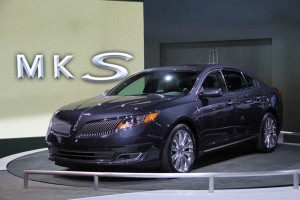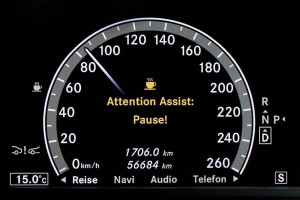If you’ve ever felt yourself nodding off when you’ve spent a little too much time behind the wheel you’re not alone. According to a recent study by the AAA Foundation more than two in five drivers admit they’ve fallen asleep, even for a moment, when driving.
While most motorists now recognize the dangers of drunk driving, AAA officials fear that there’s a more casual attitude when it comes to drowsy driving. But new technology is designed to not only alert drivers who have begun to drift off while behind the wheel but also help them avoid an accident.
Calling drowsy driving a “serious concern,” Ford Motor Co.’s global product chief Derrick Kuzak recently revealed that the maker’s updated 2013 Lincoln MKS sedan will be able to tell when a driver is distracted or, worse, beginning to doze. The luxury model’s Lane Keeping System will initially sound an alert if the vehicle drifts out of its lane. If necessary, it will then add a bit of torque to the steering wheel to gently nudge the MKS back into its lane.
If the system senses that the driver is repeatedly drifting it assumes it’s time for a break and will flash a coffee cup-shaped warning to alert the driver to stop an rest.
Lincoln’s new system – which will also be available on the 2013 MKT crossover – is the latest in an array of new technologies designed to keep track of drivers and warn them when they may be over-tired. In some of its models, Lexus uses a special camera designed to watch head movements, which can provide the telltale first signs of drowsy driving. Mercedes-Benz, meanwhile, tracks driver inputs through the steering wheel with its Attention Assist system and will also flash a warning if a motorists appears to be ready to doze off.
The problem is not insignificant. Though 96% of those surveyed by AAA said that drowsy driving is unacceptable, nearly one in three, or 32%, admitted doing it in just the past month, and one in 10 acknowledged actually falling asleep behind the wheel at some point during the previous year.
“Although the vast majority of drivers recognize the serious threat of drowsy driving, a ‘do as I say, not as I do’ attitude exists when getting behind the wheel. Drowsy driving kills, just as sure as drunk, drugged and distracted driving does,” AAA Foundation president and CEO Peter Kissinger said in a foundation news release. “Drivers have a tendency to underestimate the impact being tired has on their driving ability, which puts themselves and others at risk.”
The safety organization suggests there are a number of signs to watch for: including difficulty keeping your eyes open and focused; difficulty keeping your head up; drifting from your lane; hitting rumble strips; missing traffic signs or driving past your exit; yawning repeatedly and rubbing your eyes; or feeling irritable and restless.
Safety experts suggest that it’s a good idea to travel when you’d normally be awake and take an overnight break rather than pressing on during a long trip. Other tips to minimize drowsy driving include:
- Taking a break very two hours or 100 miles;
- Pulling over when you feel tired rather than pressing on;
- Handing over the wheel to a passenger who’s more awake. And
- Drinking a caffeinated beverage.
But be aware that caffeine takes about a half hour to enter the bloodstream so don’t simply grab a soft drink or energy drink at the rest stop and pull back on the road. Give it some time to take effect before driving again.


